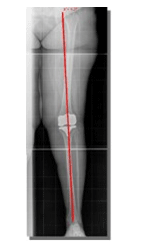A growing number of surgeons are using camera-computer systems to help them apply their skills to the utmost advantage for patients undergoing joint replacement. The goal is to assist surgeons to operate with smaller incisions and greater precision.
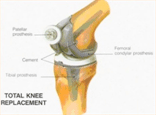
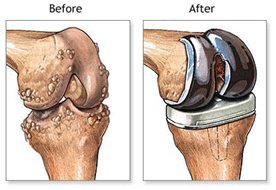
Computer-assisted surgery helps surgeons align the patient's bones and joint implants with a degree of accuracy not possible with the naked eye. For the first time doctors have detailed information allowing them to balance the ligaments and it is given to them before they make the necessary cuts. The computers also help doctors who use smaller incisions instead of the traditional larger openings. Small-incision surgery, most often referred to as minimally invasive surgery, offers the potential for faster recovery, less bleeding and less pain for patients.
Think of it this way. Perhaps you've seen the on-board computers in newer cars that provide driving directions using satellite navigation systems. On-board computers collect data points from satellites and use precise coordinates to give drivers directions from point A to point B. It provides a degree of precision, speed and accuracy not attainable with a map and compass. Similarly, computers used during orthopaedic surgeries offer visual mapping to help doctors make crucial decisions before and throughout the operation. The systems are currently used for knee replacement surgeries. However, programs are being developed for hip replacement and other common orthopaedic procedures. The objective is to combine the precision and accuracy of computer technology with the surgeon's skill to perform surgery.
An advantage is that the doctor has greater "vision" when it counts during surgery. This supports decision-making and enhances the surgeon's flexibility. Here's how it works. Computer-assisted surgery uses:
1. The computer system
2. Cameras
3. Software
4. Specialized surgical instruments
5. Physician training
Doctors typically undergo special training to use computer assisted technology. DePuy Orthopaedics, Inc. refers to this category of surgery as iOrthopaedics, or Intelligent Orthopaedics, and requires users of their computer navigated system, the CiTM System, to go through one of their training centers before use.
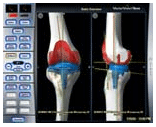
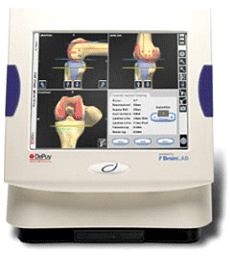
The Ci System captures the patient's unique anatomy and translates it to a computer screen, providing an unobstructed view of the patient's knee joint. The software and instrumentation of the Ci System are designed to work together. (Some systems use traditional surgical tools that must be adapted for use with computers). Imaging technology allows the surgeon to see a computer generated picture representation of a patient's bones allowing them the potential to operate with smaller openings and with more accuracy to reduce malalignment. The Ci System's lightweight, wireless computer system is used with a small camera array. A digital model is produced that serves as a map for each operation. The cameras take data via infrared signals from reflectors placed on the patient's body and on specially designed surgical instruments. The computer uses the data to track the exact position of the patient and the instruments on a monitor. The combination of computer visualization and special surgical instruments allows doctors to align the implant with greater precision than when doing the procedure with the naked eye.
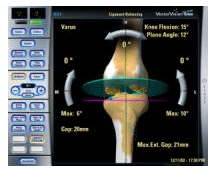
Whether the procedure includes or does not include computer support, joint replacement surgery is not for everyone. Recovery takes time and hard work. The life of a new joint depends on weight, activity level, age and other factors. Each patient responds differently. The most common adverse events include loosening, wear of components, osteolysis, infection, fracture, dislocation and tissue reaction. Advocates of the technology say they expect the use of computer-aided surgery to spread rapidly in the next decade because of the following potential benefits:
1. Support for the doctor in pre-operative planning.
2. Intra-operative flexibility to adapt the plan based on the data shown during the surgery.
3. Improved surgical accuracy and consistency.
The future of computer-assisted surgery is exciting and promising. Total joint replacement is a proven procedure that has been successful for decades in helping people live with less pain and greater mobility. Some surgeons will adapt the technology right away; others will await further results while adhering to the traditional hands-on approach they've used for years. As with any medical treatment, individual results may vary. Only an orthopaedic surgeon can determine whether an orthopaedic implant is an appropriate course of treatment. There are potential risks, and recovery takes time. The performance of the new joint depends on weight, activity level, age and other factors.
